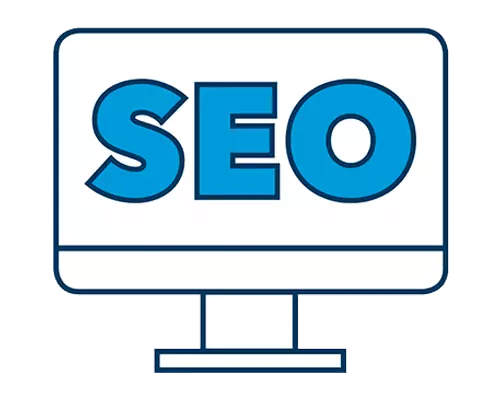Whether you’re a Fortune 500 company or just starting your first small business, every company in the world has an effective marketing strategy to increase brand awareness and drive new customers to their products and services.
However, if you’ve never been involved in a successful marketing strategy, it’s easier to say than create one.
The most effective marketing strategy considers every aspect of the marketing flow, from a complete understanding of the audience to a well-defined marketing budget.
There is a lot to do in a company’s marketing strategy.
This guide looks at some of the best marketing strategies ever and shows you how to use different types of marketing strategies to maximize your bottom line in the shortest amount of time.
What is a marketing strategy?

Before we explain how to create an effective marketing strategy, you need to understand what a marketing strategy is and how it can help improve your advertising.
Simply put, business marketing strategies are the tools marketers use to outline different campaigns and marketing models.
This is how you arouse your customers’ interest in your products and services.
To develop an effective marketing strategy, you need to do four things:
- Understand who is buying your product or service (who are your customers?).
- Understand how these people motivate you to buy/continue to buy your product or service.
- Understand who your competitors are and what they are doing to achieve the same goals.
- Understand how to measure the success of your marketing campaigns and initiatives.
Like marketing plans, marketing strategies need to cover the five “Ps” of marketing:
- Products – What you are trying to sell.
- Price – Profit Margin, Marketing Budget, etc.
- Place – Which channel or platform do you use? (For example, are you planning to place ads on social media, use email marketing, or go offline?) Consider where your customers are already spending their time finding the best marketing location.
- Promotions – What do you want to achieve? (Do you want to increase your presence on social media, increase your brand awareness, or promote your new product?).
- People – Who is your target audience? What drives you?
Answering these questions is a great place to start building your company’s marketing strategy.
Marketing Strategies vs. Marketing Plans vs. Marketing Tactics
While a “marketing strategy” may seem relatively simple, it often causes confusion when deciding whether to create a marketing strategy, marketing plan, or marketing tactic.
All three marketing initiatives work together, but they cover slightly different aspects and should not be used interchangeably.
Marketing Plan
A marketing plan is an overview of all marketing initiatives.
This includes campaigns that you plan to run over a period of time, project-wide goals and ambitions, and surveys collected to support those goals.
Marketing strategies
At first glance, a marketing strategy is very similar to an overall marketing plan. However, the strategy will only take a closer look at some selected parts of the marketing plan.
For example, if your marketing plan is to promote a new product or service, there may be a strategy focused on how to use email marketing to support those broader goals…
Any marketing plan is most likely to spawn multiple marketing strategies as part of a broader plan.
Marketing tactics
Marketing plans and strategies are aimed at explaining what you do, but marketing tactics get deeper and show you how to do it.
Using the example above, the marketing plan is to raise awareness of the new product. Marketing strategy is how to use email marketing as part of it.
Marketing tactics describe the specific actions you take as part of a marketing campaign.
Types of marketing strategies

Now that you understand some of the different marketing terms, it’s time to focus on your marketing strategy and how they work as part of your business plan.
There are different types of marketing strategies you can use to suit your business needs.
Not all marketing strategy types are covered today, but these are just some of the main ones you are likely to encounter:
1. Social media marketing strategy

Today, social media marketing is a very compelling way to increase traffic, increase brand awareness, and enjoy the benefits of social selling to take over online marketing, so it’s a big part of marketing planning for any business.
According to recent data, about 54% of social media users use social platforms to research brands and products, and 89% of consumers who follow a particular brand buy from that brand.
If you don’t use effective social media marketing strategies with these numbers, you’re missing out on huge rewards.
2. Email marketing strategy

Anyone who has ever said “email is dead” is completely wrong. Capturing customer emails and browsers needs to be an important part of your marketing strategy and is a great way to continue conversations with people who are interested in your brand.
There are many email marketing tools that can help you in this area. However, effective email marketing strategies are needed to create consistent and compelling emails that turn readers into buyers.
3. Inbound marketing strategy

An inbound marketing strategy is to attract customers and increase traffic to your website or product.
Inbound marketing is about generating leads from people who are interested in a product, service, or brand as a whole, rather than using “disruptive” marketing techniques (such as TV advertising).
Email marketing is a good example of an inbound marketing strategy.
If someone subscribes to your mailing list, they’re probably at least a little interested in what you have to say.
These leads are likely to already be in sales, so this allows you to take a gentler approach to marketing.
Another inbound marketing strategy could be a blog post.
People only see blog posts related to their search terms and interests, which means they have expressed a need to be at least slightly related to what you are selling.
4. Content marketing strategy

Content marketing strategies can overlap with inbound marketing strategies, but they are more specific.
Content marketing strategies focus on creating content that attracts and interests people.
This probably covers blog posts and white papers and may even overlap with social media marketing.
In fact, every part of a marketing campaign that requires content requires an effective content marketing strategy.
5. Editorial strategy

The editorial approach is a particularly important marketing strategy for advertising companies because it emphasizes the content formats, workflows, and channels used to achieve marketing goals.
This is similar to the kind of marketing strategy you would expect from a news or media organization and can be essential for brand publishers and advertisers to stay focused on their marketing activities and ideas.
6. Marketing communications strategy

Marketing communications strategies should focus primarily on the brand’s message and value proposition. That’s the way you say what you need to say.
For example, is your tone serious or humorous?
Do you market yourself as an expert in your industry?
What kind of message do you want to convey?
7. Digital marketing strategy

Digital marketing probably doesn’t require a lot of referrals … This marketing strategy covers everything from your online marketing, SEO, social media lead generation, performance marketing, and more …
If you’re online, you need to be effectively covered by your digital marketing strategy.
8. Internal marketing strategy

In-house marketing is less important to SMBs, but it can be an important part of marketing activities for large companies.
A good example of an internal marketing strategy is an internal email that informs employees that they are eligible to become shareholders or asks existing shareholders to support new initiatives.
Internal marketing can also cover more mundane topics.
Keep informing employees about changes in organization, brand, or internal procedures.
9. Public relations strategy

If you’re in business, you probably know how complex your PR strategy is.
Proper public relations are important not only to satisfy customers but also to protect the brand image in the eyes of stakeholders, the media, as well as government agencies, and other influential agencies.
Every large company needs a dedicated PR team to handle the brand’s public image. Besides protection, good public relations can also provide valuable reviews.
10. SEO strategy

SEO needs to be part of all the different marketing strategies. Still, there may be benefits to explicitly focusing some of your marketing efforts on SEO. This is likely to be the leading cause of potential lead generation.
SEO (or search engine optimization) is pretty much what it says on the label.
A technology that uses keywords, phrases, and mostly relevancy to increase visibility when users search for related terms on the Web.
Proper search engine optimization is arguably the best way to increase traffic to your website and should be at the forefront of all your digital and content marketing strategies.
Of course, SEO goes beyond keyword optimization and considers many other aspects that help you climb the Search Engine Results Page (SERP).
Therefore, we recommend that at least one member of your marketing team focus on the latest SEO trends so that you can rank first on Google.
How to Create the Most Effective Marketing Strategy

When it comes to strategic marketing strategies, there isn’t always a one-size-fits-all solution.
Strategies can take many forms, from Word documents to flowcharts to slides … but while they may look different, the most effective marketing strategies always have some things in common.
Last but not least, your marketing strategy should cover the following questions:
Who are you trying to reach?
In this section, you really need to get into the minds of your audience.
This includes creating detailed buyer and user personas using all possible information such as demographics, age, location, employment status, interests, passions, vulnerabilities, and more.
The more details you can include in your target market research, the better you can understand and communicate with your audience.
Where will you reach your potential customers?
As part of your target audience research, you should also consider where they spend their time (online and offline).
For many companies today, most marketing strategies can be social media-centric.
However, even after narrowing it down, it’s still worth creating marketing strategies for different social media platforms and other marketing channels you plan to use.
What action do you want people to take?
Answers to this question drive action-inspiring phrases and basically set goals for the entire marketing campaign.
Want to generate more website traffic?
Increase sales?
Do you want to raise awareness of new products?
Do you want to increase your followers on social media?
Would you like to improve your ranking in search results?
Whatever your goals, it’s important to articulate them as part of your digital marketing strategy.
How will you inspire potential customers to take action?
The next question is derived from it and is about how to persuade or inspire consumers to take the desired behavior.
This may include discount codes, summer sales, and referral programs. You can also let a brand, product, or service speak for itself if you just want to raise awareness.
How will you measure success?
Without KPIs and objective ways to measure the success of your marketing campaign, there really isn’t a way to monitor whether your campaign is working.
A clear and measurable goal and the exact goals you can use to see if you’re achieving them are essential to an effective marketing strategy.
For example, if your goal is to increase your brand’s followers on Instagram, it’s easy to see that you’re heading in the right direction. However, you need to dig deeper into conversion goals, weekly and monthly goals, and more.
Top tips for creating successful marketing strategies

Regardless of the size of your ad campaign, it’s important to always back up with a marketing strategy that summarizes how to turn your browser into a consumer.
To make the best and most effective marketing techniques readily available, make sure your strategy is doing the following:
Set specific goals
SMART (concrete, measurable, achievable, relevant, time-based) goals are essential to a good marketing strategy.
These not only give you goals but also help you monitor your progress and hold you accountable.
Identify your target audience.
It’s important to properly identify your target audience, their passion, and their problems.
Lesson to note, do your target market research thoroughly, and don’t just build a product because you think it looks cool.
As we learned above, a lack of understanding of your audience and their needs/desires is always a recipe for disaster.
Identify your competition
You can learn a lot from the competition. On the one hand, you can review other companies in your industry to see what they are doing well and what their audience is reacting to.
Identifying competitors’ issues, on the other hand, can be a great stepping stone in finding and differentiating your own selling points.
Choose the most effective platform
It doesn’t make sense to shout out your product in places your customers never visit.
As part of your market research, you also need to find out where your customers are spending their time online and offline.
Then create a marketing strategy using the platform and channels that your customers are already using.
Marketing strategies make it more likely that you’ll reach your goals
You don’t have to be a Fortune 500 company to invest in and benefit from an effective marketing strategy.
Even small businesses need marketing to increase brand awareness and attract people.
After all, even the best products in the world, no one buys them unless you know who you are!
As the famous quote says, “Failing to prepare is preparing to fail.” surveys support this, with 313% of marketers having a documented marketing strategy being more likely to succeed than those without a marketing strategy.
So don’t waste your precious time and money investing in unexpected marketing campaigns.
Instead, take the time to create detailed plans and strategies with marketing tactics for success.
That way, you can maximize your ROI right away.

















